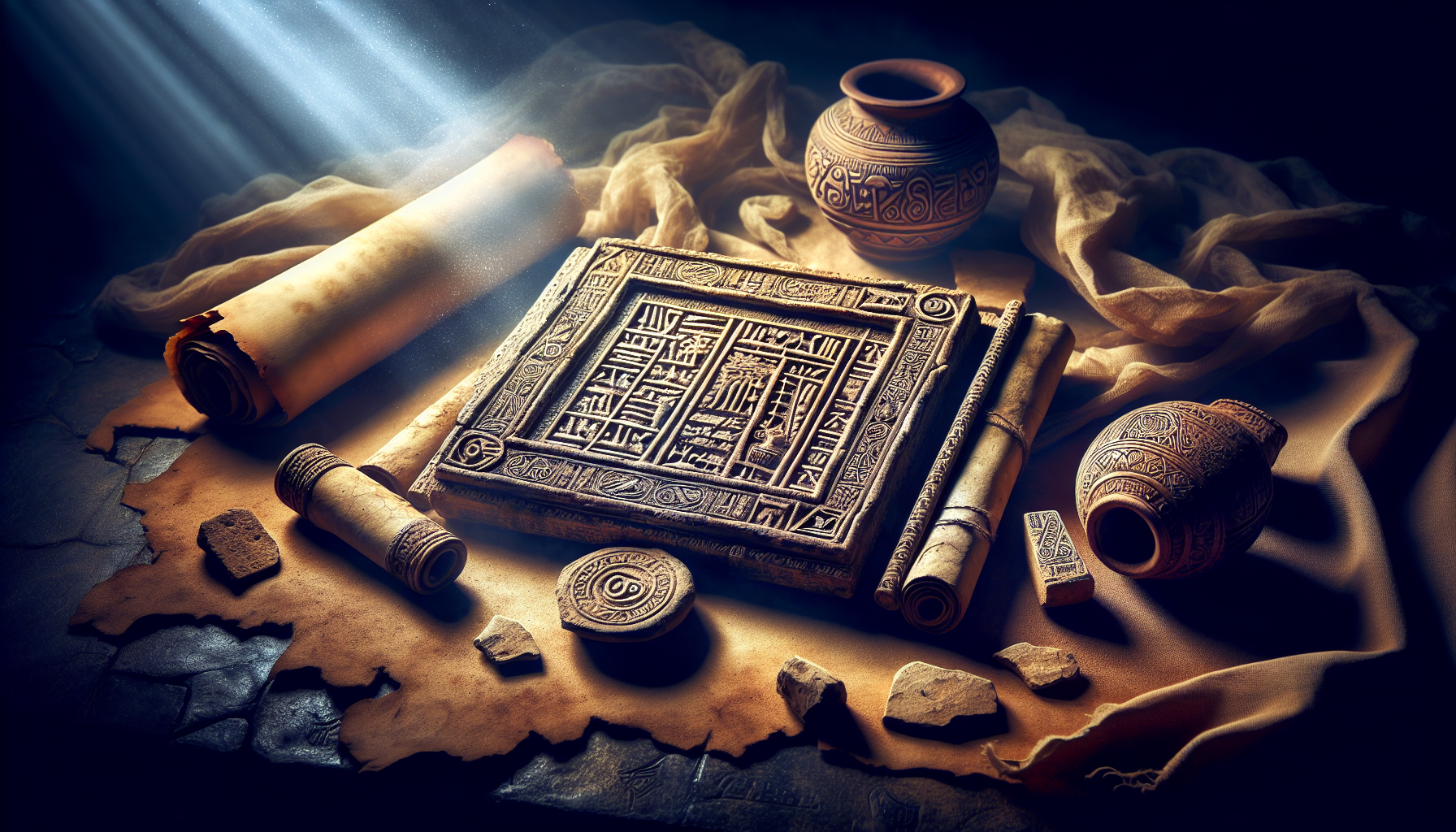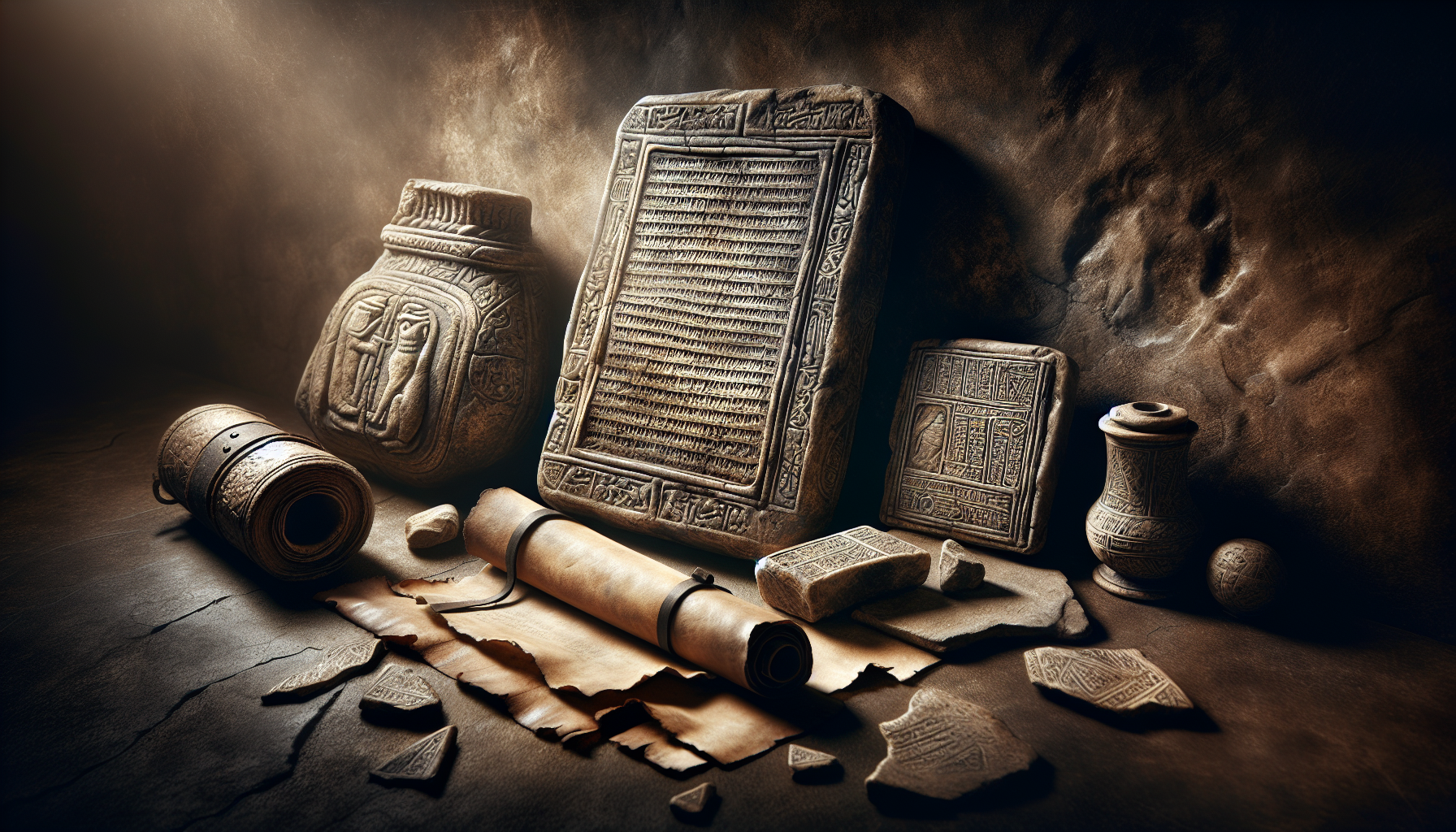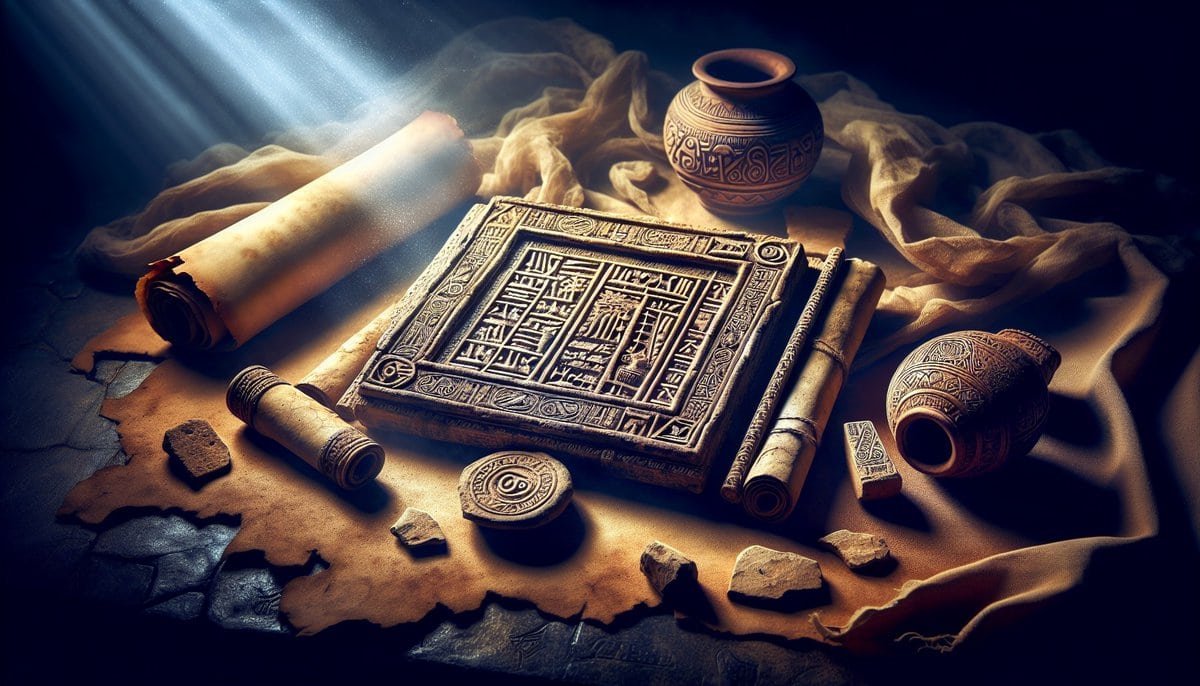Unearthing the Secrets: Discoveries of Biblical Archaeologists takes readers on a fascinating journey through the ancient world, where dedicated researchers have unearthed remarkable treasures and shed light on centuries-old mysteries. From the opulent ruins of lost civilizations to the humble artifacts of everyday life, these groundbreaking discoveries offer a rare glimpse into the lives of those who came before us. Join the intrepid explorers as they unearth hidden clues and piece together the puzzle of our shared human history.

Introduction
Biblical archaeology is a field of study that combines biblical texts and archaeological evidence to gain a deeper understanding of ancient civilizations. By examining artifacts, structures, and texts from biblical times, archaeologists can piece together the history and culture of the people who lived during these periods. This article will explore the relevance of biblical archaeology and delve into some of the fascinating discoveries made by these archaeologists.
Explanation of Biblical Archaeology
Biblical archaeology is the study of artifacts and archaeological remains that are related to the stories and events described in the Bible. It aims to uncover evidence that can shed light on the historical accuracy of biblical accounts and contribute to our understanding of ancient civilizations. By examining physical remains such as pottery, buildings, and ancient texts, archaeologists can piece together the puzzle of the past.
Relevance of Biblical Archaeology
Biblical archaeology is relevant because it provides tangible evidence that supports the historical accuracy of the Bible. Through the discoveries made by archaeologists, we can gain a deeper understanding of the cultures, customs, and events described in biblical texts. It helps to bridge the gap between ancient civilizations and the modern world and gives us insight into the lives of our ancestors. Furthermore, biblical archaeology helps to validate the historical reliability of the Bible, making it an important field of study for those interested in understanding the foundations of Western civilization.
Uncovering Ancient Cities
Excavations of Jericho
One of the most famous discoveries in biblical archaeology is the excavation of Jericho. The ancient city of Jericho, located in modern-day Palestine, is mentioned in the Bible as the first city that the Israelites conquered upon entering the Promised Land. Archaeological excavations, led by British explorer Sir Charles Warren and later by Kathleen Kenyon, revealed the remains of multiple ancient cities built on top of one another, dating back to the 9th millennium BC. These extensive excavations provided valuable insights into the city’s fortifications, daily life, and the transition from a hunter-gatherer society to an urban civilization.
Discoveries in Uruk
Uruk, also known as biblical Erech, is an ancient Mesopotamian city mentioned in the book of Genesis. It was one of the earliest urban centers in human history and played a significant role in the development of civilization in the region. Excavations at Uruk have revealed monumental buildings, intricate temples, and evidence of a highly organized society. These archaeological findings shed light on the cultural and economic aspects of ancient Mesopotamia, as well as the interactions between different city-states in the region.
Exploration of Babylon
Babylon was one of the most important and influential cities in ancient Mesopotamia. It is frequently mentioned in the Bible, particularly in relation to the Babylonian Exile of the Israelites. Archaeological excavations have uncovered the famous Ishtar Gate, the Hanging Gardens, and the ruins of the ancient city. These findings provide valuable insights into the grandeur and sophistication of Babylonian architecture, as well as its significance as a cultural and political center.
Revealing Biblical Artifacts
Unearthing the Dead Sea Scrolls
The discovery of the Dead Sea Scrolls in the mid-20th century revolutionized our understanding of the Bible and its textual history. Discovered in caves near the Dead Sea, these ancient manuscripts include fragments of every book of the Hebrew Bible except for Esther. They also contain other texts not found in the traditional biblical canon. The Dead Sea Scrolls provide valuable insights into the development of the biblical text, as well as the religious beliefs and practices of the Jewish communities during the Second Temple period.
Finding Noah’s Ark
The story of Noah’s Ark is one of the most well-known stories from the Bible. According to the biblical account, Noah built an ark to survive a catastrophic flood that covered the entire Earth. While the search for Noah’s Ark has captured the imagination of many, archaeological evidence supporting its existence remains elusive. Nevertheless, there have been claims of potential ark sightings, most notably on Mount Ararat in Turkey. However, the debate surrounding the authenticity of these findings continues among archaeologists and scholars.
Exploring the Ark of the Covenant
The Ark of the Covenant is a sacred object of great significance in the Bible. It was believed to contain the stone tablets of the Ten Commandments and was housed within the Tabernacle and later the Temple in Jerusalem. While the whereabouts of the Ark are unknown, various theories and claims have emerged over the years. In biblical archaeology, the search for the Ark of the Covenant remains an intriguing mystery, with many enthusiasts hoping to uncover this legendary artifact.

Discovering Ancient Texts
Deciphering the Mesha Stele
The Mesha Stele, also known as the Moabite Stone, is an ancient inscribed monument that provides valuable information about the kingdom of Moab mentioned in the Bible. Discovered in Jordan in the 19th century, the stele includes an account of the victories of King Mesha over the Israelites. It is written in the Moabite language, which is closely related to ancient Hebrew. The decipherment of the Mesha Stele has greatly contributed to our understanding of the political and historical context of the biblical narratives.
Unraveling the Rosetta Stone
The Rosetta Stone is one of the most famous discoveries in the field of archaeology. It was discovered in Egypt in 1799 by French soldiers and played a crucial role in deciphering Egyptian hieroglyphs. The stone contains inscriptions in three different scripts: hieroglyphic, demotic, and Greek. By using the Greek text as a key, scholars were able to unlock the meaning of the ancient Egyptian hieroglyphs. This breakthrough in understanding ancient Egyptian writing systems has greatly enhanced our understanding of the historical and cultural context of biblical texts that mention Egypt.
Interpreting the Tel Dan Inscription
The Tel Dan Inscription is another significant discovery in biblical archaeology. Discovered in the late 20th century in Northern Israel, it contains an Aramaic inscription that refers to the “House of David.” This inscription is the first and only archaeological evidence of King David from a non-biblical source. It serves as a remarkable confirmation of the historical existence of King David, a figure of great importance in biblical texts.
Finding Proof of Biblical Figures
Evidence of King David
Archaeological excavations in Jerusalem have uncovered evidence that supports the existence of King David. During the excavations led by Israeli archaeologist Yigal Shiloh in the City of David, a large stone structure was discovered, believed to be the palace of King David. Additionally, an inscription on a stela found in the ancient city of Tel Dan refers to the “House of David,” further validating the historical accuracy of the biblical account of King David’s reign.
Excavating the Tomb of Tutankhamun
Tutankhamun, also known as King Tut, was an ancient Egyptian pharaoh who lived during the 14th century BC. His tomb, discovered by British archaeologist Howard Carter in 1922, yielded a vast treasure trove of artifacts and remains one of the most extraordinary archaeological discoveries in history. While not directly related to the Bible, the discovery of Tutankhamun’s intact tomb allowed archaeologists and historians to gain valuable insights into the burial practices and religious beliefs of ancient Egypt, which are often referenced in the Bible.
Identification of the House of Peter
The identification of the House of Peter in Capernaum, a fishing village on the Sea of Galilee mentioned in the gospels, is a significant discovery in biblical archaeology. Excavations led by Franciscan archaeologist Virgilio Corbo revealed the remains of a first-century house believed to be the house of the apostle Peter. This finding provides a tangible connection to the New Testament and the life and teachings of Jesus.
Exploring Biblical Landmarks
Researching the City of Sodom
The city of Sodom is infamous in the Bible for its wickedness and destruction. Its location remains a subject of debate among scholars and archaeologists. Various potential sites have been proposed, including the region around the Dead Sea. While definitive evidence of the existence and destruction of Sodom has not been found, ongoing research and excavations in the region continue to shed light on the possible historical and geographical context of this biblical city.
Investigating Mount Sinai
Mount Sinai is a key location in the biblical story of Moses and the Israelites’ exodus from Egypt. Its exact location has long been a topic of discussion and speculation. Traditional theories suggest that Mount Sinai is located in the southern part of the Sinai Peninsula. However, alternative theories propose locations in northwestern Saudi Arabia or Jordan. While definitive archaeological evidence supporting any particular location is yet to be found, the ongoing investigation of possible sites provides valuable insights into the historical context of the Exodus story.
Locating the Pool of Siloam
The Pool of Siloam plays a significant role in the New Testament, particularly in the story of Jesus healing a blind man. Located in the ancient city of Jerusalem, the pool was used for ceremonial washing and was an essential water source for the city. In 2004, during construction work, archaeologists discovered the remains of the Pool of Siloam. This discovery confirms the biblical account of the pool’s existence and provides additional context for understanding the religious practices and customs during Jesus’ time.
Unraveling Ancient Biblical Stories
The Exodus: Seeking Historical Evidence
The story of the Exodus, in which Moses leads the Israelites out of slavery in Egypt, is one of the central narratives in the Bible. However, the historical evidence for this event remains a subject of debate among scholars and archaeologists. While some argue that there is limited archaeological evidence supporting the Exodus story, others emphasize the lack of definitive proof. Ongoing archaeological research in Egypt and the Sinai Peninsula continues to shed light on the historical context of the Exodus story, though a consensus has not yet been reached.
The Tower of Babel: Myth or Reality?
The Tower of Babel is a story from the book of Genesis that describes the construction of a tower by the descendants of Noah in order to reach the heavens. While the story is well-known, the historicity of the Tower of Babel remains uncertain. Some scholars interpret it as a mythical or symbolic narrative, while others propose that it was a real architectural project. The search for evidence of the Tower of Babel continues, with researchers exploring ancient Mesopotamian sites in the hope of finding archaeological support for this biblical story.
The Battle of Jericho: Archaeological Proof
The Battle of Jericho is a biblical account in which the Israelites, under the leadership of Joshua, conquer the fortified city of Jericho by circling it for seven days and blowing their trumpets. Archaeological excavations at the site of ancient Jericho uncovered a collapsed city wall, verifying the existence of a city that experienced some form of destruction. While the exact dating and correlation with the biblical story remain debated, the discovery of the city’s remains supports the general historical backdrop of the Battle of Jericho.
Piecing Together Biblical Genealogy
Tracing the Ancestry of Jesus
The genealogies of Jesus Christ in the New Testament are important for establishing his lineage and connecting him to the ancestral roots of Judaism. Scholars and biblical archaeologists have explored various sources, including the Gospel of Matthew and the Gospel of Luke, to trace Jesus’ genealogy. These genealogical studies aim to understand his familial connections and place him within the broader context of biblical history and the lineage of the Jewish people.
Exploring the Family Tree of Abraham
Abraham is considered the father of the Jewish people and is central to the Abrahamic religions. The biblical account provides genealogical information tracing Abraham’s lineage back to Noah and further to Adam. Archaeological and historical research have explored the ancient Near Eastern context to understand Abraham’s familial roots and cultural background, shedding light on the broader historical and social aspects of the biblical narrative.
Genealogical Discoveries in the Bible
Genealogies are an integral part of the Bible, tracing the lineage of various individuals and families. These genealogical records offer valuable insights into the social structure, familial ties, and cultural practices of the ancient world. By analyzing these genealogies, biblical archaeologists can piece together a more comprehensive understanding of the societies and individuals mentioned in the Bible.
Analyzing Ancient Religious Practices
Uncovering Ancient Temple Rituals
Ancient temples played a central role in religious and cultural life. By excavating and studying these sacred sites, biblical archaeologists can gain insights into the rituals, ceremonies, and religious practices of ancient civilizations. The analysis of temple architecture, inscriptions, and artifacts helps to reconstruct the religious experiences and beliefs of the people who lived during biblical times.
Exploring Practices of Animal Sacrifice
Animal sacrifice was a prevalent religious practice in the ancient Near East, including the cultures mentioned in the Bible. By examining archaeological remains such as altars, animal bones, and inscriptions, biblical archaeologists can uncover evidence of this ancient ritual. These findings shed light on the role of animal sacrifice in religious ceremonies, as well as its significance in the worship of various gods and deities.
Studying Ancient Prayer Artifacts
Prayer is a fundamental aspect of many religious traditions, including those described in the Bible. Through the discovery and analysis of ancient prayer artifacts such as inscriptions, pottery, and figurines, biblical archaeologists can gain insights into the spiritual practices and beliefs of ancient civilizations. These artifacts provide a tangible connection to the prayers and devotion of individuals who lived thousands of years ago.
Conclusion
Biblical archaeology has revealed numerous treasures and insights that have deepened our understanding of ancient civilizations and the historical accuracy of the Bible. From uncovering ancient cities such as Jericho and Babylon to deciphering ancient texts like the Dead Sea Scrolls and the Mesha Stele, each discovery contributes to our knowledge of the societies and events described in the Bible. These findings not only illuminate the past but also have implications for our understanding of the present and future. As biblical archaeologists continue to explore the ancient world, exciting discoveries await, offering a fascinating glimpse into the world of biblical times.






